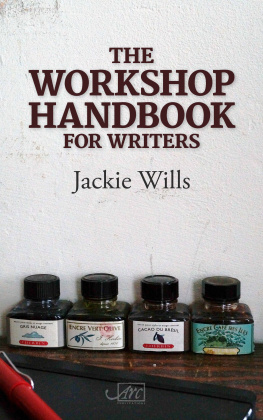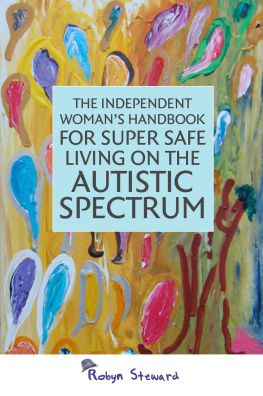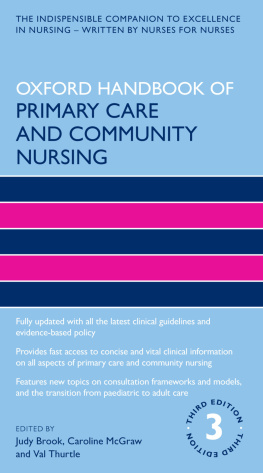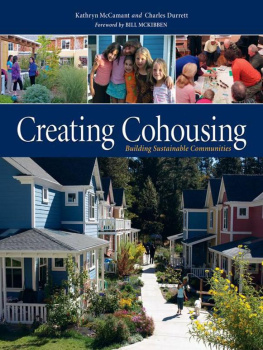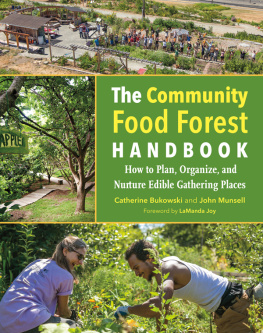Table of Contents
Advance Praise for The Senior Cohousing Handbook
Dive right into this book and be enriched by the insights and the wisdom you will find there. Im not kidding. Go. Now. Your future is waiting for you.
Bill Thomas, MD, from the Prologue
Charles Durrett has written a book inviting an exciting eldership.
Wouldnt it be great if every step of life had such thoughtful design?
Patch Adams, MD, from the Foreword
The key to living a long, healthy life is community having a group of people who know and care about you with whom you socialize at least once a week. This book shows you how seniors all over the world are combating isolation and loneliness by building healthy communities. Viva the community! Long life! Honey in the heart!
Eric Utne is the founder of Utne Reader .
Quality of life is more and more important in the last part of our life, and there is no need to live out our later years alone or lonely. Aging in place in community is an opportunity waiting for development; and cohousing the most creative housing option for seniors is one that we can make happen for us NOW, if we, as Chuck Durrett says, Go forth and be one with [our] own future.
Bolton and Lisa Anthony, Senior activists, and founders of Second Journey
As a long time developer of housing and a resident of Silver Sage Cohousing, I cant imagine any way to live that makes more of our opportunities for quality of life and living lighter on the planet. Chucks book captures all that and enables our potential as proactive seniors.
Jim Leach, Housing Developer and Senior Cohousing resident
Cataloging in Publication Data:
A catalog record for this publication is available from the National Library of Canada.
Copyright 2009 by Charles Durrett.
All rights reserved.
Cover design by Diane McIntosh.
Cover photos: Man with sunflower iStock/Alex Raths. All others courtesy of Charles Durrett.
Printed in Canada.
First printing April 2009.
Paperback ISBN: 978-0-86571-611-7
Inquiries regarding requests to reprint all or part of Senior Cohousing should be addressed to New Society Publishers at the address below.
To order directly from the publishers, please call toll-free (North America) 1-800-567-6772, or order online at: www.newsociety.com
Any other inquiries can be directed by mail to:
New Society Publishers
P.O. Box 189, Gabriola Island, BC V0R 1X0, Canada
(250) 247-9737
New Society Publishers mission is to publish books that contribute in fundamental ways to building an ecologically sustainable and just society, and to do so with the least possible impact on the environment, in a manner that models this vision. We are committed to doing this not just through education, but through action. This book is one step toward ending global deforestation and climate change. It is printed on Forest Stewardship Council-certified acid-free paper that is 100% post-consumer recycled (100% old growth forest-free), processed chlorine free, and printed with vegetable-based, low-VOC inks, with covers produced using FSC-certified stock. Additionally, New Society purchases carbon offsets based on an annual audit, operating with a carbon-neutral footprint. For further information, or to browse our full list of books and purchase securely, visit our website at: www.newsociety.com
To Rosemary, my Mom
Prologue
William H. Thomas, M.D.
Professor and Distinguished Fellow, The Erickson School
Ive been rich and Ive been poor and believe me, rich is better.
Sophie Tucker
W ealth. Riches. Affluence. Capital. Prosperity. Net worth. Security is one of the tent poles of well-being. Everybody wants it, everybody needs it, but what is it, exactly?
The easy thing is to link wealth with money. After all, who could be more secure than a billionaire? A billionaire who had been a successful movie producer, aviator, engineer, founder of a medical research institute, airline mogul, and winner of the Congressional Gold Medal would be especially secure in his old age dont you think? Maybe, maybe not.
Howard Hughes died a recluse: a drug addict with hair, beard, fingernails, and toenails all grown to grotesque lengths despite the fact that he always kept a barber on call. He was estranged from his family, surrounded by strangers. One of the richest people in the world on the day of his death, the autopsy recorded evidence of severe malnutrition (he weighed only 90 pounds), and x-rays revealed broken hypodermic needles still embedded in his arms. Was Howard Hughes rich?
Then there is that nice girl from Albania who moved to India and settled into the life of a schoolteacher outside of Calcutta. There she experienced what she would later refer to as the call within a call. I was to leave the convent and help the poor while living among them. It was an order. To fail would have been to break the faith. She began this missionary work in 1948, venturing out into the slums, tending to the needs of the destitute and starving. Despite expressions of support from the Indian government, she had no income and had to resort to begging for food and supplies. Her congregation, the Missionaries of Charity, received official sanction from the Vatican in 1950. Along the way, Mother Teresa won the Nobel Peace Prize and the Presidential Medal of Freedom. At the time of her death, the Missionaries of Charity had over 4,000 sisters, an associated brotherhood of 300 members, and over 100,000 lay volunteers, operating 610 missions in 123 countries. Was Mother Teresa poor?
Real wealth is derived from a blend of financial and social capital. Social capital? While it is vital to our everyday lives (and happiness), the concept of social capital remains something of a mystery to most Americans. Financial capital is something we can understand easily because it is value reduced to numbers. Television networks, newspapers, authors, advisors and wealth gurus are all ready and eager to help us put our financial house in order. We cannot say the same for social capital, which is, simply, the net value of all of the voluntary reciprocal personal relationships that are part of our everyday lives. In other words, it pays to have and to be a darn good neighbor. Since few of us are likely to follow in the footsteps of either Howard Hughes or Mother Teresa, it makes sense to think about a balanced approach to wealth that provides us with both the financial and social capital we need if we are to find a life worth living.
This is where senior cohousing comes into play. When you think about it, cohousing can be understood as a wealth-creation strategy that allows people to develop affordable housing enriched with an abundance of social capital. When people come together with the intention of being darn good neighbors and with the expectation of having darn good neighbors, their lives are made better in a myriad of ways that financial capital has a hard time duplicating. Unlike communes, in which people merge their personal finances with the economy of their community, cohousing strikes a balance that honors privacy and autonomy even as it encourages relationship-building and shared governance. Cohousing is, in my mind, the most approachable, most replicable strategy for the creation of intentional communities available to us today.




